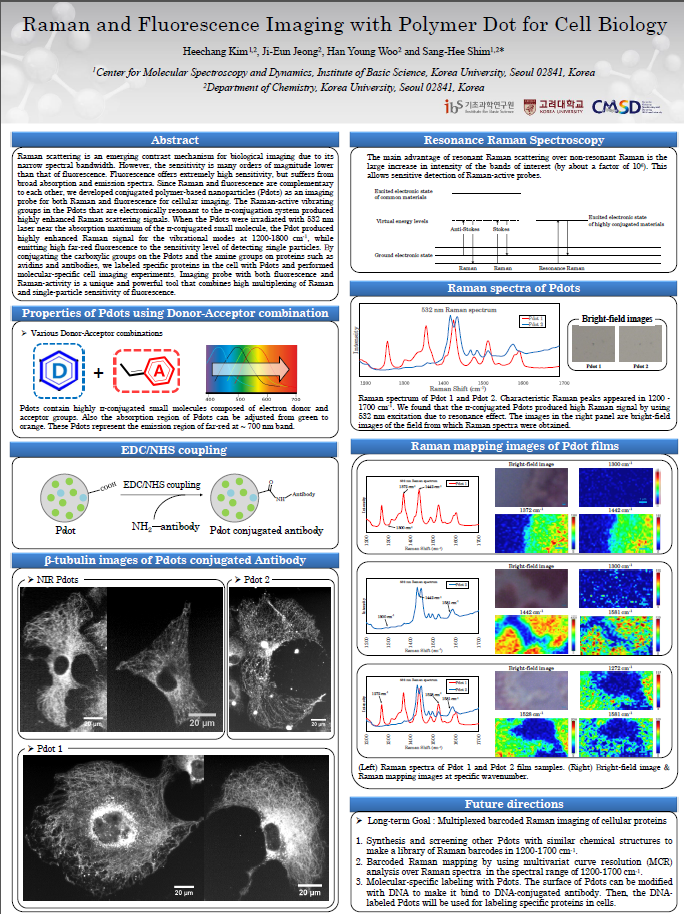mainmenu
Raman and Fluorescence Imaging with Polymer Dot for Cell Biology
2018 KCS 122nd

Raman scattering is an emerging contrast mechanism for biological imaging due to its narrow spectral bandwidth. However, the sensitivity is many orders of magnitude lower than that of fluorescence. Fluorescence offers extremely high sensitivity, but suffers from broad absorption and emission spectra. Since Raman and fluorescence are complementary to each other, we developed conjugated polymer-based nanoparticles (Pdots) as an imaging probe for both Raman and fluorescence for cellular imaging. The Raman-active vibrating groups in the Pdots that are electronically resonant to the π-conjugation system produced highly enhanced Raman scattering signals. When the Pdots were irradiated with 532 nm laser near the absorption maximum of the π-conjugated small molecule, the Pdot produced highly enhanced Raman signal for the vibrational modes at 1200-1800 cm-1, while emitting high far-red fluorescence to the sensitivity level of detecting single particles. By conjugating the carboxylic groups on the Pdots and the amine groups on proteins such as avidins and antibodies, we labeled specific proteins in the cell with Pdots and performed molecular-specific cell imaging experiments. Imaging probe with both fluorescence and Raman-activity is a unique and powerful tool that combines high multiplexing of Raman and single-particle sensitivity of fluorescence.


